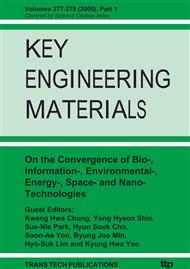p.961
p.966
p.972
p.977
p.983
p.990
p.995
p.1000
p.1006
HOMO-LUMO Interaction between Diene and Dienophile with an Electron-Withdrawing Group
Abstract:
Recently, the carbon-centered organic system with C-H hydrogen bonds is being examined and reported with particular focus on its chemical shifts. These properties are traditionally associated with the red shifted hydrogen bond due to the weak interaction of C-H hydrogen bonds. In a few cases, however, the strengthening of the C-H bond is characterized by the blue shift. In this study, organic-inorganic hybrid silica and fluorinated amorphous carbon films have been deposited on a p-type Si (100) substrate by inductively coupled plasma chemical vapor deposition. The reason for the chemical shift in the low dielectric constant materials with C-H hydrogen bonds was researched on, and the effect of the meso-structure of the films by the inverse electron demand Diels-Alder reaction of the C=C and C=O double bond was also studied.
Info:
Periodical:
Pages:
983-989
Citation:
Online since:
January 2005
Authors:
Price:
Сopyright:
© 2005 Trans Tech Publications Ltd. All Rights Reserved
Share:
Citation:


